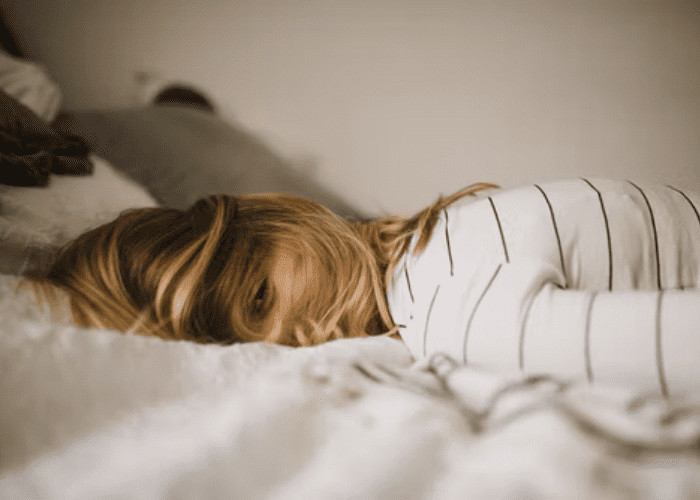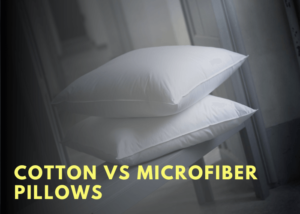Suppose you are experiencing nighttime wakefulness or difficulty sleeping at night. Longer catnaps can either energize you or make you feel groggy and grumpy. Worse is, you find it hard to sleep at night. So, why take a nap if it’s ruining your sleep?
Sleeping after a nap is hard; that’s why people fight the urge to nap not to disturb their sleeping cycle worse. But if this isn’t an option, eliminate lights and sounds, change your sleeping position or go to another room.

It is common to feel tired and ready to sleep after taking a nap, especially if the nap was long or if it was taken in the late afternoon or early evening. However, the length and timing of your nap may also affect your ability to sleep later on. Here are a few tips to consider if you are trying to sleep after taking a nap:
- Nap for the right amount of time: A short nap of 20-30 minutes can help boost alertness and performance, while a longer nap of 90 minutes may include deep sleep and help improve mood and memory. Napping for longer than 90 minutes, however, may make it harder to fall asleep at night.
- Nap at the right time: The best time to take a nap will depend on your schedule and individual needs. Some people find that napping in the early afternoon, around 1-3pm, works best for them. Others may find that a late afternoon nap, around 3-5pm, helps them sleep better at night.
- Create a comfortable sleep environment: A cool and dark room, a comfortable bed, and minimal noise can all help you get a better night’s sleep.
- Engage in relaxation techniques: Deep breathing, progressive muscle relaxation, or mindfulness meditation may help you relax and fall asleep more easily.
- Avoid screens before bed: The blue light emitted by screens can disrupt your natural sleep-wake cycle, making it harder to fall asleep. Avoid screens for at least an hour before bed.
- Consider talking to a healthcare provider: If you are having persistent difficulty sleeping after taking a nap, a healthcare provider may be able to offer additional guidance and support.
Why can’t I sleep after taking a nap?
An afternoon slump is sometimes inevitable, especially if you’re stressed and tired. A short, light sleep is not inadequate at all as long as you can beat that nasty post-slumber grogginess and grumpiness.
Sleep experts said something about “sleep inertia .”It simply means feeling groggy, sleep dazed, or in a state of feeling drowsy because your brain wants you to sleep more and complete your entire sleep cycle.
Sleep inertia usually occurs from waking up abruptly from a deep sleep. That is why it is advisable to spend just ten to twenty minutes nap time. In most cases, your nightly sweet slumber is not serrated.
Napping in the morning and napping in the afternoon increases your sleep drive, interfering with your ability to fall asleep at night.
Getting out of bed may not sound like a good idea, but a change of scenery can help a lot. Reading, playing word games like crossword puzzles, or reciting your favorite mantra can alleviate your sleeplessness. Half an hour later or less, your sleepiness may revive.
While we tend to toss and turn, watch the clock, flip on the TV or play with our electronic devices, there are better ways to help ourselves sleep after napping. Techniques that pave the way for sound sleep and beyond.
How do I fall asleep after napping?

Putting your mind and body at ease is the most common form of getting relaxed to counter your inability to go back to sleep. Listening to soothing music or reading a book is a great way to find how to sleep after napping?
Anything that tickles your fancy or reading something uninteresting can induce relaxation of the mind and spirit. Praying or meditation is also beneficial if you are a believer.
There’s a common practice for deep breathing, which says “smell the roses and blow the candle” is a sure way to relax. It is proven to be fast and easy because it eases tense muscles, relieves stress, and of course, can help you get a good night’s rest even after taking a nap.
By taking a nap the right way, you can still savor the sweetness of a good night’s sleep. Most people can take naps during the day yet enjoy a healthy sleep cycle.
But those who struggle with falling asleep right away should avoid taking a nap during the day—longer naps, especially.
The bed is only for sleep or intimacy. Also, they need to avoid social media like Facebook, YouTube, Twitter, watch television or play with electronic devices while lying in bed. Exposure to blue and green lights from your phone, tablet, or computer while in bed can make you feel alert.
Staring the clock and checking the time now and then can be stressful if you’re trying to reach a goal of sleeping as scheduled.
Stop watching the clock. Watching the time pass by only increases your distress at being awake. Put the clock out of your sight and resist the temptation to check the time from your smartphone.
Keep lights dim if possible. Like clocks, too bright night lights are not advisable in your desire to sleep easily. Bright lights elicit alertness and wariness; thus, it’s a no-no when you need to sleep.
How do I fall asleep after napping during the day?
The human brain receives signals when the body’s temperature is low and physically at ease at night. However, if the brain ignores these signals, you will end up lying awake for hours because your body and brain are no longer in sync.
Though taking a nap during the day is essential, especially for people who don’t get enough sleep at night, napping can disrupt the circadian rhythm and sleep-wake cycle. Limit napping to 20-30 minutes a day only.
Moreover, try to adopt a consistent sleeping and waking schedule seven days a week. Going to bed simultaneously and waking up at the same time the following day works best. Don’t nap, and don’t go to bed early the next night.
Get up at your usual time and go to bed at your usual time. You may be a bit tired, but avoiding napping during the day increases your body’s appetite for sleep.
Also, skip caffeine or food before bedtime. Both play a significant role in not getting a good night’s sleep with or without napping.
Taking a warm bath before going to bed can also lull you to restful sleep. Your mind is relaxed, the body is calm, the temperature is low, and your breathing is slow, making you feel cozy and comfortable, giving your body a sweet snooze.
Make sure your bedroom is cool and dim and that your linens are pleasant. And don’t forget to empty your bladder before you hit the sack. This, in turn will prevent you from waking up feeling groggy and grumpy and unable to sleep back right away.
If after twenty to thirty minutes you still can’t sleep, try to get out of bed and leave your room. Don’t spend time in bed trying to get asleep.
You will be disappointing yourself and end up more stressed. Instead, relax your body by focusing from your toes to your head, tightening your muscles for five seconds then releasing the tension all at once.
This progressive muscle relaxation works through the different muscle groups in our body (arms, legs, torso, face, for instance). Take slow, deep breaths in between muscle groups. Repeat until sleep creeps in. Avoid any areas that hurt.





